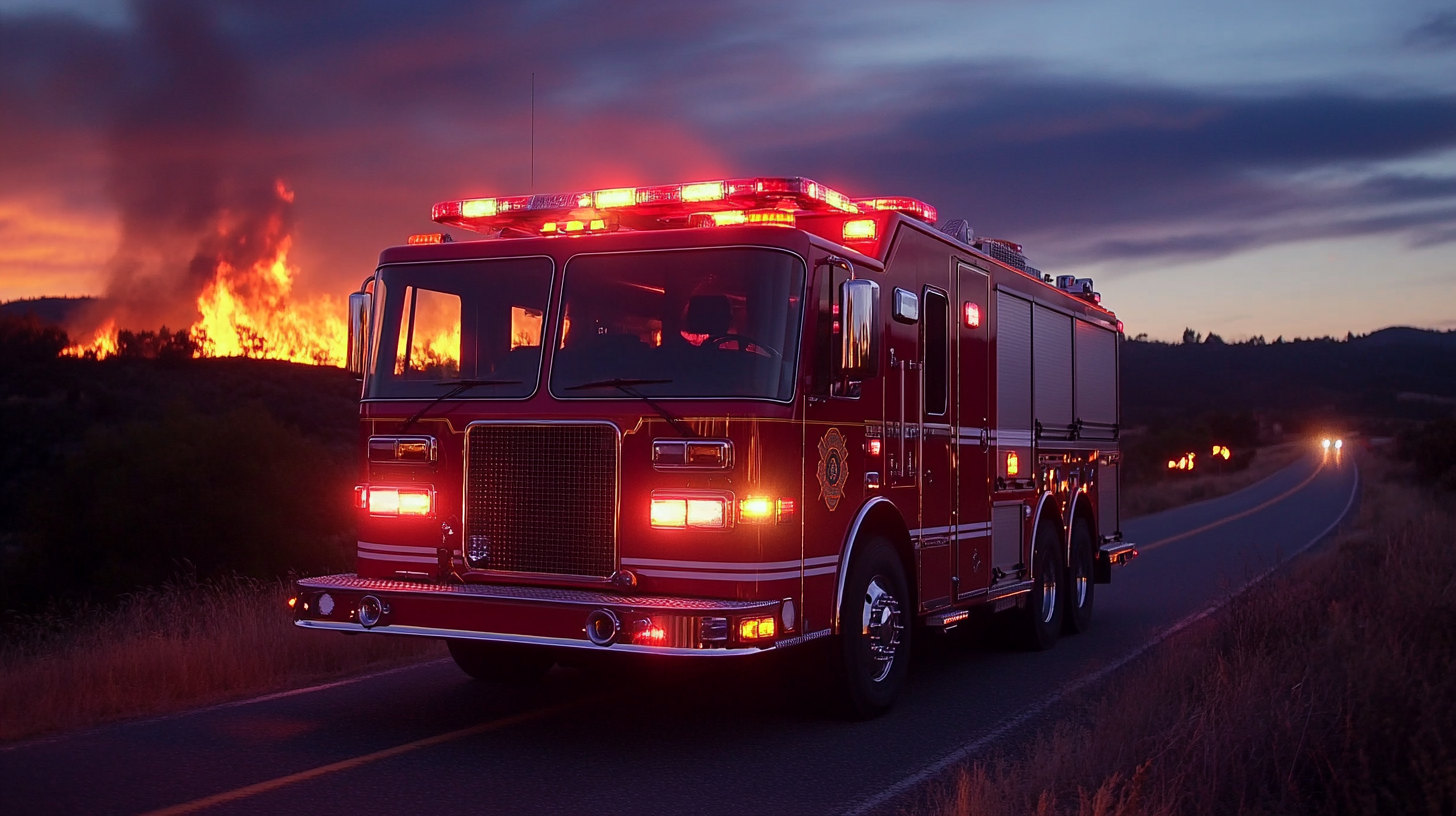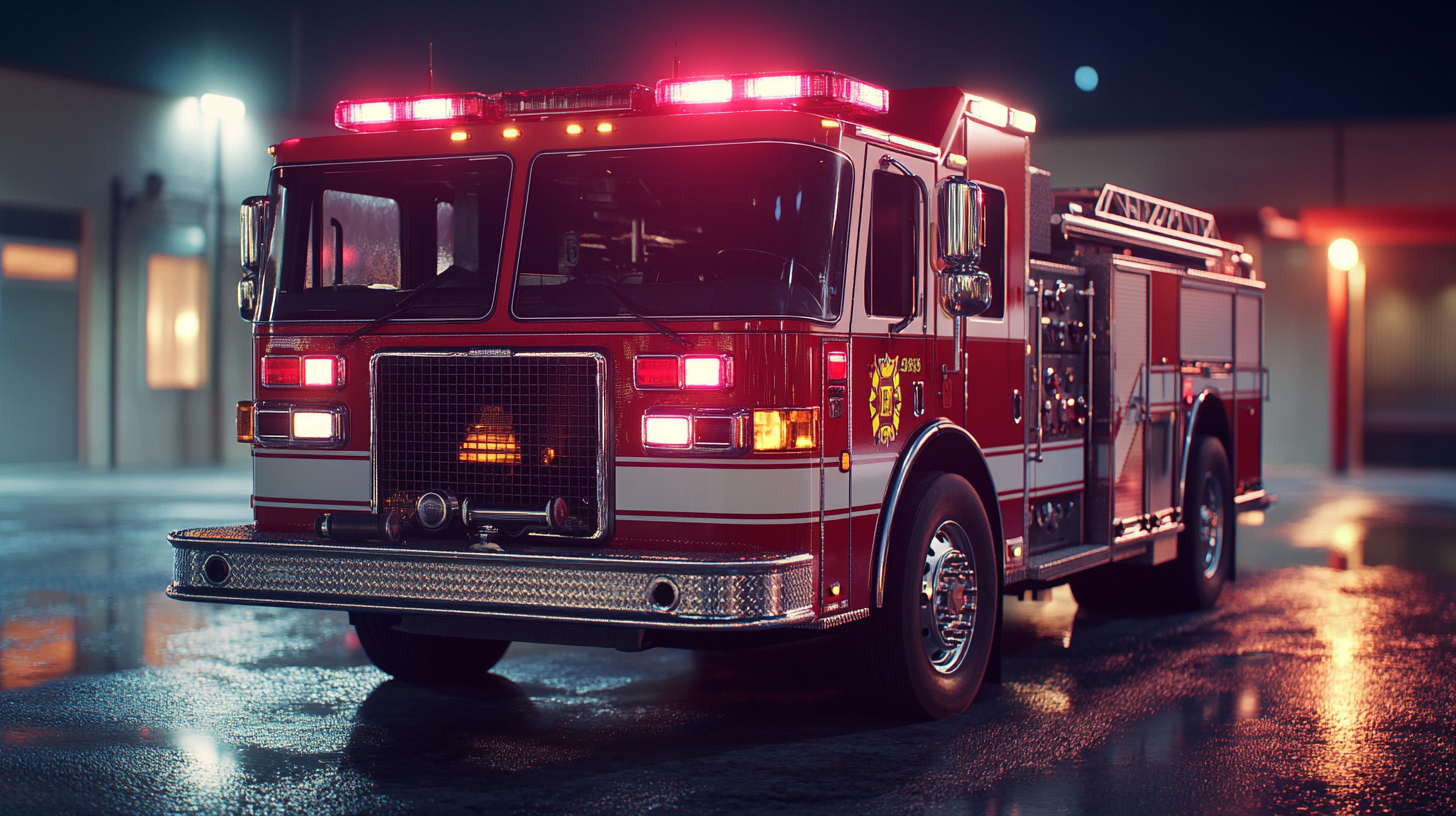Navigating International Trade Certifications for the Best Fire Apparatus in a Global Market
In today's global marketplace, the demand for high-quality Fire Apparatus is critical, not just for safety reasons but also to meet increasingly stringent international trade certifications. According to a report by the National Fire Protection Association (NFPA), fire incidents cost the U.S. economy approximately $280 billion annually, highlighting the urgent need for reliable fire response equipment. However, navigating the myriad of international trade requirements can pose significant challenges for manufacturers and suppliers. Issues arise from varying standards, compliance complexities, and regional regulations. This blog will explore practical industry applications of Fire Apparatus and address common problems encountered in securing the necessary certifications to thrive in a competitive global environment. Understanding these dynamics is essential for businesses aiming to enhance their market presence and ensure the safety of communities they serve.

Understanding the Importance of International Trade Certifications in Fire Apparatus
International trade certifications play a critical role in the global market for fire apparatus, ensuring that products meet specific safety and performance standards. As more countries engage in international trade, the importance of these certifications has intensified. They serve not only as a guarantee of quality but also as a passport for manufacturers looking to expand their reach into diverse markets. Fire apparatus such as trucks, pumps, and hoses must comply with various international standards to be deemed safe for use. Therefore, understanding these certifications can significantly influence purchasing decisions for fire departments and safety organizations worldwide.
Moreover, different regions may have unique certification requirements, making it essential for manufacturers to fully understand and navigate these regulations. Non-compliance can result in severe consequences, including financial penalties and product recalls. By obtaining the necessary certifications, manufacturers can demonstrate their commitment to quality and safety, gaining a competitive edge in the global market. This understanding not only aids in compliance but also builds trust with customers who rely on certified fire apparatus to protect lives and property.

Key International Certification Standards to Consider for Fire Equipment
When navigating the complexities of international trade in fire apparatus, understanding key certification standards is essential for ensuring that equipment meets global safety and performance benchmarks. One of the foremost standards to consider is the National Fire Protection Association (NFPA) certification, which is widely recognized in the United States and serves as a benchmark for fire equipment safety.
Compliance with NFPA standards not only assures reliable performance but also increases the marketability of fire apparatus across international borders.
Additionally, the European Norm (EN) standards play a crucial role in European markets, requiring manufacturers to meet rigorous performance and safety criteria. EN certifications, such as those for fire hoses and firefighting vehicles, enable companies to gain access to the European market while ensuring that their products are reliable and effective.
By prioritizing these international certifications, manufacturers position themselves to compete effectively in a global marketplace, while fire departments can trust that their equipment will uphold the highest safety standards.
Emerging Technologies Impacting Fire Apparatus Design and Certification in 2025
As we approach 2025, the fire apparatus industry is witnessing a significant transformation driven by emerging technologies. Innovations such as advanced materials, smart sensors, and artificial intelligence are set to revolutionize the design and certification processes. These technologies not only enhance the performance and safety of fire apparatus but also streamline compliance with international trade certifications. The future fire vehicles will be equipped with real-time data analytics, allowing for better decision-making during emergencies.
**Tips for Navigating Emerging Technologies:**
1. Stay updated on industry trends by following relevant journals and attending webinars focused on fire safety innovations.
2. Collaborate with technology partners to integrate their expertise into your apparatus designs, ensuring that regulatory requirements are met efficiently.
Furthermore, the incorporation of sustainable technologies is becoming increasingly important. Fire departments are now looking towards electric and hybrid vehicles that not only lower carbon emissions but also reduce operational costs. Embracing these trends will not only position manufacturers competitively in the global market but also align with the growing demand for environmentally conscious solutions.
**Tips for Embracing Sustainability:**
1. Prioritize research and development in eco-friendly technologies to keep your offerings relevant and attractive.
2. Engage with stakeholders to solicit feedback on sustainability efforts, fostering a community-driven approach to innovation.
Strategies for Manufacturers to Navigate Global Trade Compliance in Fire Safety
In today's global market, manufacturers of fire apparatus face a labyrinth of international trade compliance challenges, exacerbated by shifting tariffs and evolving regulations. As uncertainty prevails, especially amid geopolitical tensions, firms must adapt their strategies to ensure compliance without compromising operational efficiency. A compliance-first approach is essential, where understanding local regulations and international standards can significantly mitigate risks associated with international trade.
**Tips for Compliance:**
1. Stay informed about changes in trade regulations and tariffs. Regularly monitor updates from government and regulatory organizations to anticipate shifts that may affect your compliance strategy.
2. Develop relationships with local partners and legal advisors who specialize in trade compliance. Their insights can provide guidance on navigating complex legal environments and mitigating risks associated with international operations.
Additionally, leveraging technology can enhance compliance efforts. Investing in compliance management software can streamline processes and ensure that all aspects of trade are accounted for, from documentation to monitoring regulatory changes. This proactive approach not only helps in fulfilling obligations but also supports strategic decision-making in a competitive global landscape.
Navigating International Trade Certifications for the Best Fire Apparatus in a Global Market
| Certification Type | Purpose | Region | Compliance Requirements | Validity Period |
|---|---|---|---|---|
| ISO 9001 | Quality Management | Global | Annual audits | 3 years |
| NFPA 1901 | Fire Apparatus Standards | USA | Initial testing and periodic re-examination | 5 years |
| CE Marking | Product Safety | European Union | Conformance to safety directives | Indefinite, as long as compliance is maintained |
| UL Certification | Safety Testing | USA & Canada | Product testing and factory inspections | 1 year (annual renewal) |
| FM Approvals | Property Loss Prevention | Global | Testing and ongoing conformity assessment | 5 years |
Future Trends in Consumer Expectations for Certified Fire Apparatus in Global Markets
The global market for certified fire apparatus is witnessing significant shifts as consumer expectations evolve amid increasing awareness of safety standards. According to a recent study by Custom Market Insights, the Global Testing Inspection and Certification (TIC) market is projected to reach USD 352.24 billion by 2034, growing at a CAGR of 3.4%. This growth is fueled by heightened demand for reliable and compliant fire safety equipment as organizations and consumers alike prioritize safety and quality assurance in their purchases.
Furthermore, the Global Smoke Detector market is expected to rise to USD 85.58 billion by 2034, reflecting a remarkable CAGR of 10.48%. This increase emphasizes the growing recognition of the critical role that certified fire safety products play in preventing fire-related incidents. As consumers become more discerning and informed about safety certifications, manufacturers must adapt by ensuring their products not only meet but exceed these rising expectations, leading to innovation and quality enhancements in fire apparatus design and functionality.
In this dynamic landscape, companies involved in the fire safety sector need to invest in compliance and certification processes, as they play a crucial role in securing market share and meeting consumer demands for safety in a global trade environment defined by rigorous standards and expectations.

